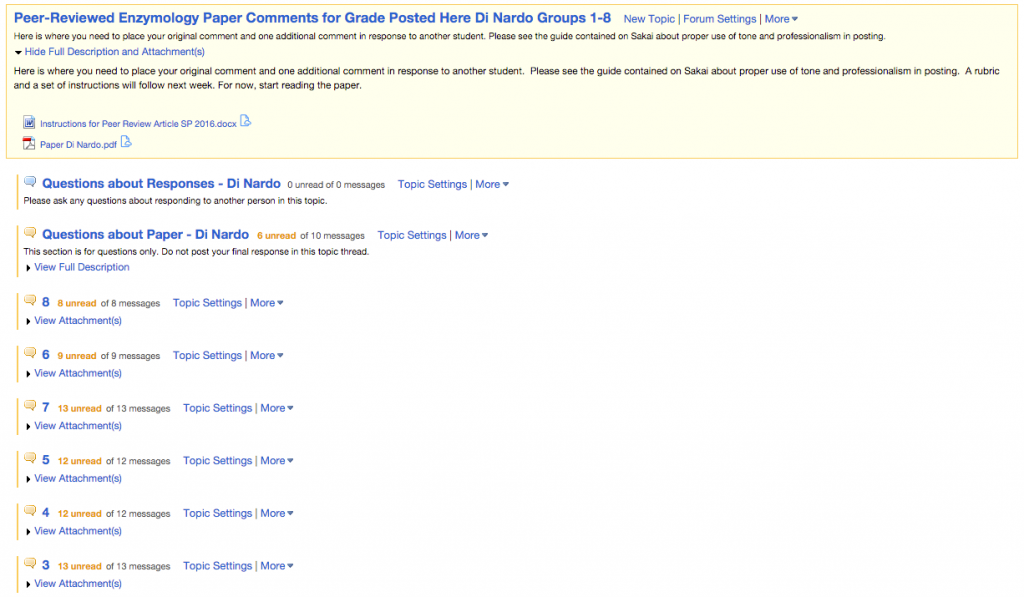At the recent NJEDge Faculty Showcase held at Stevens Institute of Technology in Hoboken, NJ, I co-presented with Kyle Murphy, a Biochemistry instructor from the Rutgers School of Environmental and Biological Sciences. Our presentation, titled “Introductory biochemistry: The art of biochemistry in the digital age,” discussed the transformation of Kyle’s course from a face-to-face format into a fully online course.
We focused on four aspects of the course that changed from the first iteration of the course in 2008 to the current version.
Anti-cheating mechanisms
Kyle discovered relatively quickly the need for anti-cheating measures — he discovered a Facebook group where students crowdsourced all of his quiz questions! To combat this, I worked with Kyle to build question pools into his quizzes. But not only one — we worked together to build multiple question pools into each major quiz. Each question pool is grouped by topic, so while the students each receive a different version of the quizzes, they are all tested on the same general topics. A screencast of the question pools is shown in the video below.
Exposure to research
Undergraduate students are hardly ever exposed to current research in their field, making it difficult for them to connect course content with real-world applications. In order to expose students to original research, Kyle divides the class into groups, and each group analyzes peer-reviewed research articles assigned to them. By exposing students to current research, they can see how the course content is still relevant today. A screenshot of the research groups is pictured below.

Student Videos
In many STEM courses, there is usually little room for students to express their creativity. As Kyle is musically-inclined himself, he understands the value of creativity. So for extra credit, students may submit artistic expressions of some discrete biochemistry topic. Students have submitted many different works of art, including original music, interpretive dance, and computer animations. And because students are required to publish their works to sites like YouTube, Kyle is able to freely share students’ work with the class. A mash-up of three students’ works is included in the video below.
Learning Modules
Kyle was not satisfied with the level of interactivity in his Biochemistry course. He was impressed by the interactive modules advertised by textbook publishers, but he was not impressed by the textbooks that went along with them. So I worked with Kyle to create similar interactive modules using Adobe Captivate. The modules begin with short mini-lessons focusing on discrete topics, followed by brief quizzes where students could test their knowledge. The quizzes could be repeated as many times as necessary until the students got them all correct.
The modules included audio, video, animations, and interactive features like buttons and text fields. Video clips from each of the five modules are included in the video below.
Our presentation can be downloaded below in PDF format. Kyle and I hope to present an expanded version of this presentation at the NJEDge Annual Conference in November.
Kyle_Izzy_NJEDge_Fac_Showcase_2016_Presentation
Would you consider using any of these approaches in your course? Let me know in the comments!
